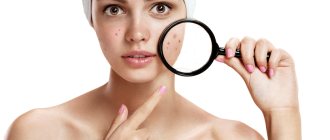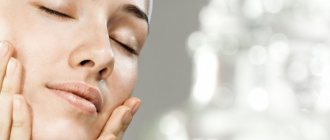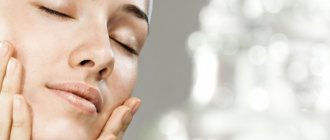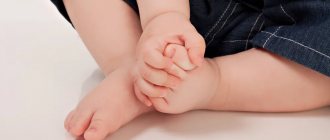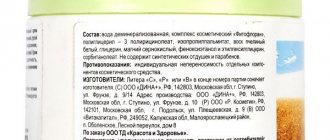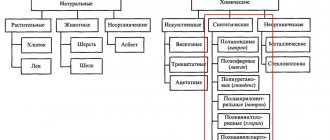ARVI, as you know, make up the majority of cases of visiting doctors during the cold season, and the pandemic of the new coronavirus infection only aggravates the situation. Infection most often occurs by airborne droplets. Viruses enter the body through the nasopharynx, which is why it is often called the “gate” of infection. Pathogens scattered in the environment, when inhaling air, settle on the mucous membrane of the nasal cavity, and it is there that they are introduced into the body, as a result of which respiratory diseases can develop. That is why it is important to prevent direct contact of viruses with the mucous membrane and their subsequent penetration into the respiratory tract. By resorting to antiviral agents that are applied directly to the mucous membrane of the nasal passages, we prevent their reproduction and further spread of the virus.
- How to choose an ointment for a child
- Mechanism of transmission of ARVI
- Colds in childhood
- Nasal antiviral for children
- Adults taking antiviral drugs into the nose (intranasally)
- Viferon Gel
- Viferon ointment
- Application diagram
- The mechanism of immunity
How to choose antiviral ointments for children
Many people understand that the most “winning” tactic in confronting colds is preventing the disease. Therefore, many parents are wondering: what antiviral nasal ointment for children will work to help local immunity? However, not all products are suitable for your baby. The fact is that most drugs have restrictions based on the patient’s age; you should carefully read the instructions and not use inappropriate drugs that can upset the delicate balance of the baby’s immune system or damage organs that are not yet strong. Currently, the number of specific antiviral agents approved for use in pediatrics is limited.
Combined ointments for the nose
The therapeutic effect of combined measures is achieved by eliminating various causes of rhinitis. For example, the combination ointment Levomekol contains two components: chloramphenicol and methyluracil. The first destroys bacteria, the second has anti-inflammatory and regenerating properties.
Other combination nasal products may also have antiallergic, sedative, decongestant, and vasoconstrictor effects. In addition to levomekol, the following drugs are usually used:
- Sunoref,
- evamenol,
- boromenthol and other ointments.
For nasal ointment to be effective, it is necessary to establish the exact cause of the runny nose, especially if it is necessary to use combination drugs.
The combination of active ingredients may vary. Somewhere in the composition, anti-inflammatory and antipruritic agents predominate, so this nasal ointment is more suitable for allergy sufferers. Combinations with a predominance of antibacterial agents are intended for snot with complications (yellow, green, purulent discharge).
After examining the nasal cavity, the otolaryngologist will help you choose the appropriate combination drug.
Routes of transmission of acute respiratory infections to adults and children
The prevalence of ARVI is associated both with a variety of pathogens and with the fact that specific immunity against past infections does not persist for a long period of time. Pathogens are easily transmitted in the environment. The need to be in a common space with other people (public transport, preschool and educational institutions, etc.) increases the risk of infection. In some cases, the carrier of the infection, without even knowing about his danger to others, can transmit the virus several days before the manifestation of clinical symptoms. The maximum danger of infection usually occurs 1-3 days from the onset of the disease. The minimum social distance, which is often recalled during the coronavirus pandemic, is 1.5 - 2 meters, but this distance, unfortunately, does not take into account factors such as air turbulence, the speed at which particles are released when coughing and sneezing.
Homeopathic ointments for the nose
Fleming's ointment
Ointment is a complex homeopathic remedy consisting of the following components:
- marigold (Calendula officinalis);
- esculus hippocastanum;
- zinc oxide;
- witch hazel;
- menthol.
The ointment has a pronounced analgesic, antiviral and antibacterial effect.
Indications for use are: allergic dermatitis, uncomplicated forms of external hemorrhoids, runny nose. Influence on microcirculation processes. Contraindications: intolerance to the composition.
Fleming's ointment should be carefully applied to the nasal mucosa three times a day. It is recommended to use gauze swabs with nasal ointment (the procedure takes 5-10 minutes). Duration of treatment is up to two weeks.
Colds in childhood
Children easily exchange infections by contacting each other. Only the first months of life are relatively safe, when the child retains the passive immunity received from the mother. The baby is somewhat isolated: contact is often limited to family members. Unfortunately, the possibility of infection cannot be completely excluded even in infancy. Among preschoolers under five years of age, the highest incidence is observed, which is obviously associated with increased social contacts and visits to children's groups. “Sadovsky” children can get ARVI up to 10-15 times during the first year, then the frequency decreases by about half, but in subsequent years it remains quite high - 3-5 times a year. Repeated colds can deplete a child’s body, reduce defenses, delay normal development, contribute to the formation of “smoldering” foci of infection and allergies, and interfere with preventive vaccinations. Specific methods of prevention include vaccination. However, the vaccine works against a specific pathogen, for example, the influenza virus, but does not work against other infections, of which there are several hundred, as we know. Non-specific methods include hardening and the use of antiviral drugs according to the scheme proposed by your pediatrician.
Home prevention methods
Preventing colds should begin in the summer. The condition of the body depends on nutrition and the intake of vitamins. A healthy lifestyle and balanced diet will help support your immune system. To do this, you need to include vegetables and fruits, fermented milk products, and a sufficient amount of lean meat and fish in your menu.
Traditional methods of preventing ARVI recommend medicinal plants and products with an immunostimulating effect. These include:
- ginger;
- garlic;
- onion;
- lemon;
- mint;
- echinacea;
- birch mushroom.
An effective method of preventing colds is staying hydrated. An adult needs 1.5-2 liters of clean water per day. This volume supports the functioning of the kidneys, helps them quickly filter the blood and remove toxic substances, viruses and metabolic products.
Nasal antiviral ointments as a way to protect children from colds
Most often, a “cold” refers to a mild illness of the upper respiratory tract, which is caused by a viral infection. The entry point for ARVI pathogens is the mucous membrane of the upper respiratory tract, where inflammation is localized in most ARVIs. A severe course of acute respiratory viral infection with damage to the lower respiratory tract with the development of bronchitis and pneumonia may be associated with reduced levels of the child’s immunity. It is known that up to the age of 7 years, a child’s immunity undergoes changes about 4-5 times. For ARVI in the acute period, etiotropic therapy is usually used using antiviral drugs of both local and general action. The role of antiviral drugs is that they prevent the reproduction of viruses and help reduce the viral load on the body. In addition, antiviral therapy facilitates the course of the disease, reduces the likelihood of complications and reduces the risk of infection to those around the patient. For the treatment of ARVI and influenza, VIFERON Ointment can be used in children over 1 year of age. Pediatricians recommend VIFERON Gel for the youngest children, which is approved from 0 years.
Anti-inflammatory and symptomatic drugs are also used in the treatment of ARVI to relieve symptoms. Patients are prescribed bed rest, drinking rest, diet, and vitamin supplements. But antibiotics are used strictly according to indications and doctor’s prescription.
MEDICATIONS
The barrier function in medicinal products is performed by the substances that make up their ointment or gel base. In addition, intranasal medications also contain active ingredients: dioxotetrahydroxytetrahydronaphthalene (“Oksolin”, nasal ointment 0.25%), interferon alpha-2b (“Viferon”, ointment and gel for external and local use; “Infagel” gel for external and local use). However, the effectiveness of their use as declared antiviral agents does not have a sufficient scientific basis.
| Trade name | Excipients | Active ingredients | With caution / Contraindications |
| Oksolin, nasal ointment 0.25% | Liquid paraffin (vaseline oil), petroleum jelly | Dioxotetrahydroxytetrahydronaphthalene | With caution during pregnancy, breastfeeding, contraindication - children under 2 years of age |
| Viferon, gel for external and local use | Alpha tocopherol acetate, methionine, benzoic acid, citric acid monohydrate, sodium tetraborate decahydrate, sodium chloride, human albumin, distilled glycerin (glycerol), sodium carmellose, ethanol 95%, purified water | Interferon alpha-2b human recombinant | Pregnancy and breastfeeding are not a contraindication for use due to the very low absorption of components; use in newborns is possible |
| Viferon, ointment for external and local use | Alpha tocopherol acetate, lanolin anhydrous, medical petrolatum, peach oil, calcium pantothenate, sodium benzoate, human albumin, sodium acetate trihydrate, sodium chloride, disodium edetate dihydrate, purified water | Interferon alpha-2b human recombinant | Possible use during pregnancy and breastfeeding due to very low absorption of components, contraindication - children under 1 year of age |
| Infagel, gel for external and local use | Aluminum hydroxide, polyvinyl alcohol, purified water | Interferon alpha-2b recombinant | Contraindicated for persons suffering from allergic diseases in the acute stage |
Mechanism of action of immunity in the nose
Most infectious agents enter the body from the surface of the mucous membranes, which are the initial portal of entry for most respiratory viruses. The immune system uses various mechanisms to fight infections. – In addition to increasing the activity of general systemic immunity, local immunity plays an important role in protecting against pathogenic viruses. It is this that helps to cope with those pathogens that have settled on the surface of the mucous membranes of the nasopharynx and prevents the further spread of infection inside.
Secretory A-type immunoglobulins are special protein substances - they play a major role in the prevention of disease or recovery. Specific prevention of viral infections involves the immune system of the mucous membranes. The IgA present on them, the action of which is aimed at neutralizing the infection, can come from blood serum or be secreted by cells of submucosal tissue.
An effective measure to protect the upper respiratory tract is the induction of immunoglobulins precisely at the sites of virus replication - the nasopharynx. Stimulating the production of high titer whey proteins is more effective for the lower respiratory tract.
Strengthening the activity of local immunity plays an important role in preventing infection of the body by certain viruses, especially influenza. Knowledge of the mechanism of formation of local immunity makes the search for means that provide protection of mucous membranes from infectious agents a solvable task. Thus, at the beginning of the last century, the theory of local immunity was formulated, and subsequently data was accumulated indicating the important role of local protective factors in a number of viral infections. With the discovery of immunoglobulin A and evidence of its secretion by mucosal cells, a new era in the development of applied immunology began.
In particular, it was found that IgA is the most important immunoglobulin, the main biological function of which is to protect the mucous membranes from infectious agents. The most likely mechanism of IgA neutralization of the virus is to prevent the virus from binding to target mucosal cells, although others are possible.
It was found that IgA can not only prevent the virus from attaching to cellular receptors, but also inhibit its penetration into the cell or replication. Studies of the mechanism of intracellular neutralization of the virus allow us to conclude that IgA can contribute not only to protection against viral infection of the mucous membranes, but also to its terminationii.
The drug VIFERON Gel, for example, has a pronounced local immunomodulatory effect and helps to increase locally formed antibodies of the secretory IgA class, which prevent the fixation and proliferation of pathogenic microorganisms on the mucous membranes, which provides a preventive effect of the drug for the prevention of viral and other diseases.
MEDICAL DEVICES
"Nazaval PLUS"
“Nazaval PLUS” is a finely dispersed cellulose powder, which, when it enters the nasal cavity, binds to mucus and forms a gel-like layer on the mucous membrane that prevents viruses from entering the body. Due to wild garlic extract (allicin and ajoenes), the growth of bacteria and viruses is suppressed, and they are also neutralized [2].
The medical product “Nazaval PLUS” can be used in children and adults, as well as women during pregnancy and breastfeeding.
| Emergency protection | Seasonal protection |
| Before contact with a sick person, in crowded places, in public transport | For daily protection against respiratory viruses all day long |
| 1 injection into each nasal passage while inhaling, once (10-15 minutes before contact, visiting a public place, traveling) | 1 injection into each nasal passage while inhaling 3-4 times a day (every 5-6 hours) |
Natural peppermint extract included in Nazaval PLUS serves as an indicator of proper use. The appearance of a slight mint smell after injection indicates that the powder from the bottle has entered the nasal cavity.
Method of application:
Step 1. Before use, if necessary, hygienically clean the nasal cavity or blow your nose.
Step 2. Gently shake the bottle. When using for the first time, it is recommended to make 2 test injections into the air.
Step 3. Pinch one nasal passage with your finger, inhale the powder into the opposite nasal passage, pressing INTENSIVELY on the walls of the bottle. Repeat the same procedure on the other side.
It is recommended to reuse after each cleansing of the nasal cavity to restore the protective layer.
If it is necessary to use it together with other nasal medications, Nazaval PLUS should be used no earlier than 30 minutes after their use, having previously cleaned the nasal passages. It is not recommended to use Nazaval PLUS after using nasal ointments and oil-based nasal drops.
Also among buyers, the demand for medical products used to protect the nasal mucosa from aeroallergens has increased significantly, since the principle of action is the same.
"Nazaval"
The medical product “Nazaval” available on the pharmaceutical market, like “Nazaval PLUS”, contains fine cellulose powder, but without wild garlic extract. Recommended for protecting the nasal mucosa from allergens and pollutants, as well as other aggressive environmental factors inhaled with air. "Nazaval" can be used in children and adults, as well as women during pregnancy and breastfeeding.
Recommend something effective to get rid of this herpes once and for all
Unfortunately this is not possible. Once entering the body - most often this happens in childhood - herpes simplex viruses never leave it. They penetrate the nerve ganglia of the trigeminal nerve and migrate from them only during relapses, and then return again to the zone of permanent “dislocation”. Activation of the infection occurs against the background of a number of risk factors, or triggers. They can be: fever, stress, fatigue, hormonal changes, respiratory infections, etc. By the way, with age, the frequency of relapses of orolabial herpes decreases.
There is no remedy that would allow you to get rid of herpes infection at once. However, there are drugs that alleviate the condition during the activation of the disease and speed up recovery. These are primarily acyclovir-based products that block the proliferation of herpes viruses. Acyclovir ointments and creams are the drugs of choice for recurrent colds on the lips, having an optimal balance of effectiveness and safety.
I heard that there are some very effective pills against herpes on the lips. This is true?
Indeed, there are antiviral drugs for the treatment of herpes intended for oral administration. Today, three oral drugs in this group are used - acyclovir, valacyclovir and famciclovir. Penetrating inside a cell infected with the herpes virus, they block DNA synthesis and stop the reproduction of the pathogen. All oral antiviral drugs are available only with a doctor's prescription.
Local forms remain over-the-counter: ointments, gels or creams. For recurrent colds on the lips, it is advisable to use these drugs, since they are practically not absorbed into the bloodstream and do not have a systemic effect.
Drugs against herpes on the lips in tablets can be prescribed in cases where relapses occur very often. This happens, for example, when the immune system is malfunctioning. If you keep having recurrent cold sores, you'd better see a doctor. He will find out why your immune system is not doing its job and may prescribe an oral antiviral medication for herpes.
Features of the use of cold ointments
In order for the therapy to bring a positive effect and not cause harm, it is necessary to consider several rules that must be followed before applying the product:
Before using nasal cream, you should thoroughly clean your nasal passages, freeing them of pus or mucus. Regular saline solution works well for this.- Ointments that have a restorative and healing effect are best applied not only to the nasal mucosa, but also under the nose itself (as a result of frequent blowing of the nose, the skin becomes inflamed, itching and irritation occur).
- Anti-virus ointment should be applied to the nose at least three times a day, the average course of therapy is 5-7 days.
- If the ointment is used for prevention, then it should be applied before going outside or having contact with a sick person. After two hours, it is necessary to remove the remaining product and reapply a new one, since during this period many pathogenic microorganisms will accumulate in the nose and the drug will no longer be so effective.
Of course, antiviral nasal ointments are indispensable for the prevention and treatment of colds, especially when it comes to pregnant women and young children.
Originally posted 2018-01-31 08:03:20.
Side effects of the ointment
When first applied, a slight burning sensation, increased runny nose, and irritation of the integument are likely to occur. With prolonged daily use, the nasal mucosa may feel dry. The risk of drying out is especially high during simultaneous treatment with vasoconstrictor drops. With proper use of the product, the discomfort gradually goes away on its own. If symptoms increase over time, the ointment should be discarded, as an allergic reaction is possible.
Oxolinic ointment does not affect the speed of psychomotor reactions and the activity of the central nervous system; it is allowed when driving vehicles and operating complex equipment.
All medicines against herpes on the lips are the same, give me something cheaper
Indeed, many drugs intended for the treatment of orolabial herpes contain the same active substance. Most often this antiviral drug is acyclovir, less often - penciclovir. However, there are means that have characteristic differences. For example, one of the creams, along with acyclovir, contains hydrocortisone. This remedy, unlike single drugs, simultaneously prevents the formation of new rash components and shortens the healing time of existing rashes, reducing the severity of the inflammatory reaction and itching [2].
What is Oxolinic ointment?
This is a pasty viscous substance based on oxoline. The ointment has a yellow tint, a homogeneous, slightly oily structure. Plastic, easily distributed over surfaces. After long-term storage, the product sometimes becomes pinkish or bluish. This feature does not affect its properties.
The medicine is released in different concentrations:
- with oxoline content 0.25%: in tubes of 10 g, used for the treatment of mucous membranes;
- with an active ingredient content of 3%: packaged in tubes of 10–30 g, suitable for treating skin or eliminating intense pathological processes.
Auxiliary compounds of the drug: wax, paraffin, vaseline oil.
Daily routine and hardening
Colds and flu can be prevented with the help of hardening procedures, which begin in the summer. In childhood and untrained people, you can wipe with a damp towel, pour cool water over your feet, gradually lowering the temperature. Hardening helps improve thermoregulation; the body will not react to hypothermia with a cold.
But hardening procedures do not give an effect immediately and only when carried out regularly. If you stop dousing, after a few weeks the body will again become susceptible to disease.
To prevent colds, it is important to follow a daily routine and avoid stress. During sleep, the hormone melatonin is produced, which is involved in regulating the function and coordinated functioning of the nervous, endocrine and immune systems. An important condition is to go to bed before 23:00, do not watch TV before bed and do not use gadgets. Melatonin is produced only in complete darkness.

